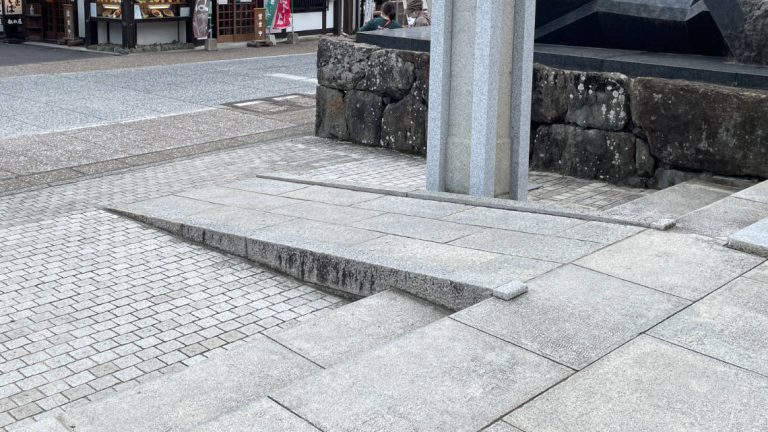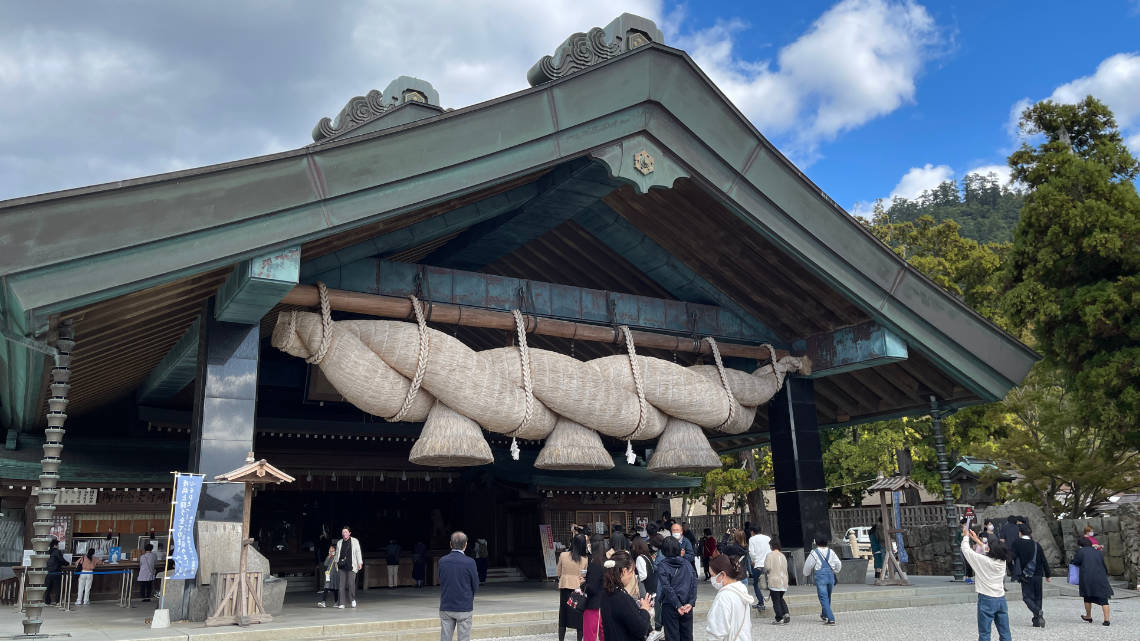
Izumo Taisha, formally Izumo Ooyashiro, is both expansive in its cultural history and the size of the land it is spread across. Many shrine buildings have been built and rebuilt here using traditional Japanese architecture that has been honed over hundreds of years. The goal, however, isn’t just to capture the attention of people visiting the shrine, but also to pay homage to the deities that blessed the lands of Izumo Taisha.
General Information
Izumo Taisha, or Izumo Grand Shrine, is the site of one of the oldest Shinto shrines in Japan. The shrine is regularly maintained and rebuilt as part of Shinto practices dedicated to sustaining the divine power of the local Kami (Deities). This shrine is especially in Japan as it has many extensive historical and cultural ties to some of the oldest legends and deities in the whole of Japan. Izumo itself would become known as the “land of the gods,” and this shrine was originally constructed to honor Ōkuninushi, the deity regard as the creator of Japan. The stories first told here would inspire generations and still have an impact on life, spirituality, art, and media to this day.
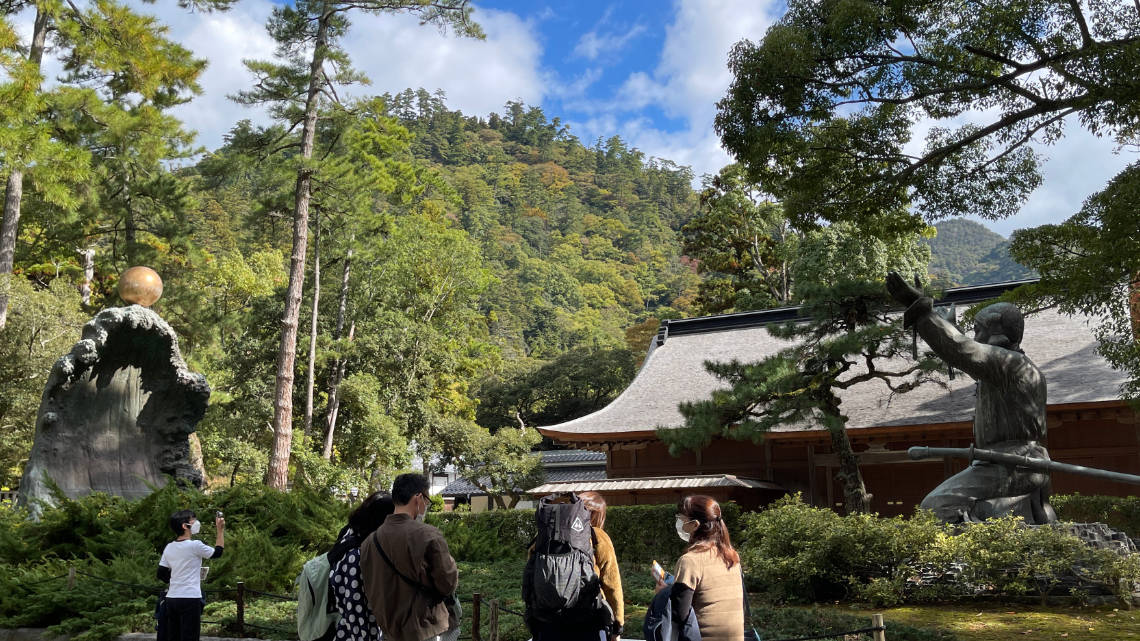
The shrine is not merely a historical site but is still in use, it hosts many Festivals, Shinto rituals, Weddings, Events, and more throughout the year.
The first part of Izumo Taisha grounds starts with beautiful Torii gates, as with most shrines Torii gates are meant to separate the divine realm from the rest of the world. From here the shrine is spread out into several buildings including the Worship Hall, Treasure Hall, Gate shrines, Traditional Ritual/Wedding Hall (Kagura-den), Senke National Museum, Main Hall, and much more.
The grounds are open 24 hours a day all year long.
Getting There
Izumo Taisha is in Izumo City, Shimane Prefecture. It is a 10-min walk from the closest station, Ichibata Electric Railway’s Izumo Taisha-Mae, which is accessible.
There are accessible parking spots for those driving.
Accessibility
Although not accessible everywhere, the areas around most of the shrine buildings are accessible by stone-slab walkways and sloped ramps instead of just compacted gravel. This makes exploring the shrine possible in a wheelchair, without disrupting the traditional aesthetics of the shrine. However, expect a bumpy ride. Thankfully they have even put thought into the gravel by adding a structured bedding to keep it smooth.

The main entrance has steps, so it is best to enter from a side entrance located near the next-door Shimane Museum of Ancient Izumo (down a road to the right of the shrine when looking at the main gate). The side entrance is about midway down the main pathway, so visitors do not miss much by entering through it. The path is fairly smooth up to the main buildings.
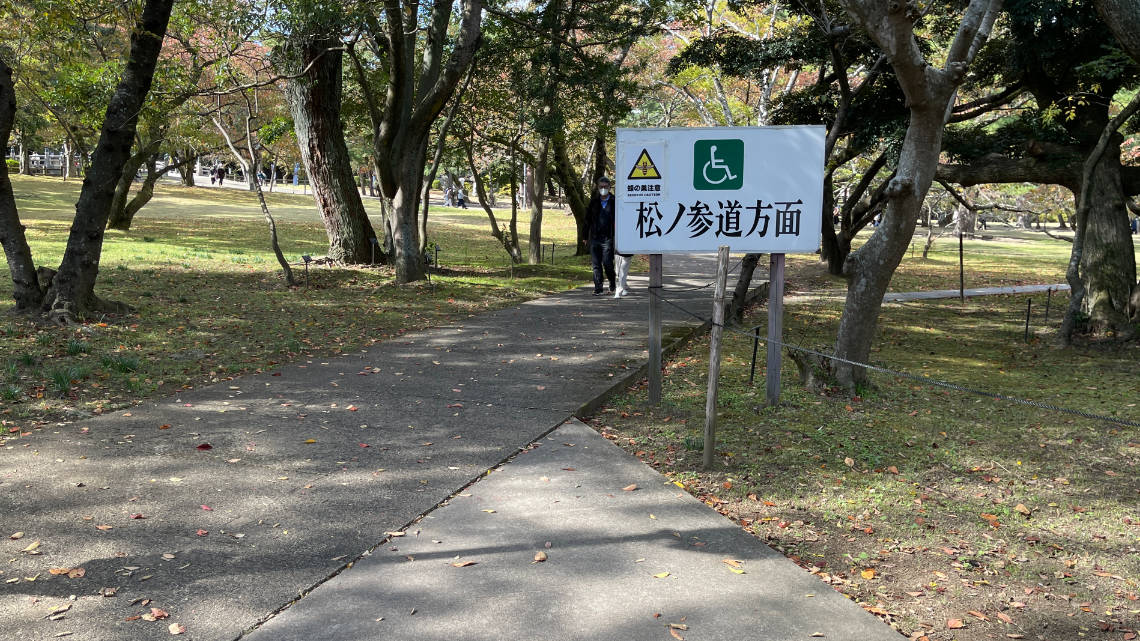
Alternatively, there is a ramp near the parking lot to the west of the shrine.
A ramp has been added to the entrance to the shrine area, where most pathways are made of stone slabs. The first large building, the Haiden (worship hall), has large sacred straw rope (shimenawa) hung along the eaves. A gently sloping ramp is available at the right-hand side.
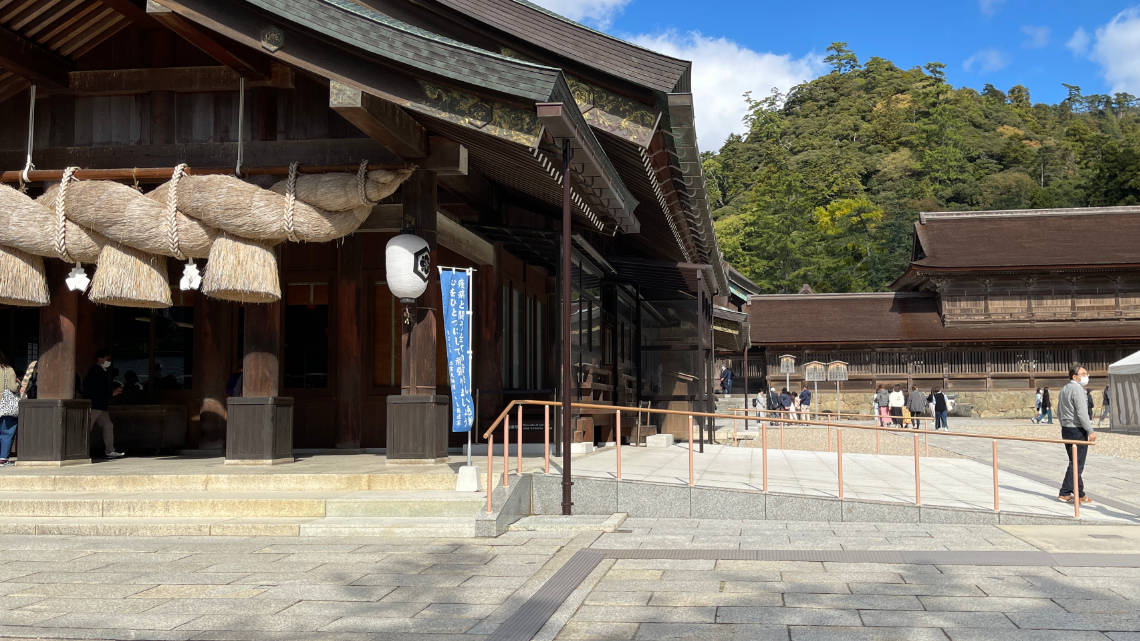
Further in, the Honden (main hall) has steps at the entrance but is not open to visitors. A pathway leads around the hall and features several smaller shrines and buildings, which are generally inaccessible, but their smaller size makes it easy enough to enjoy them from the pathway.
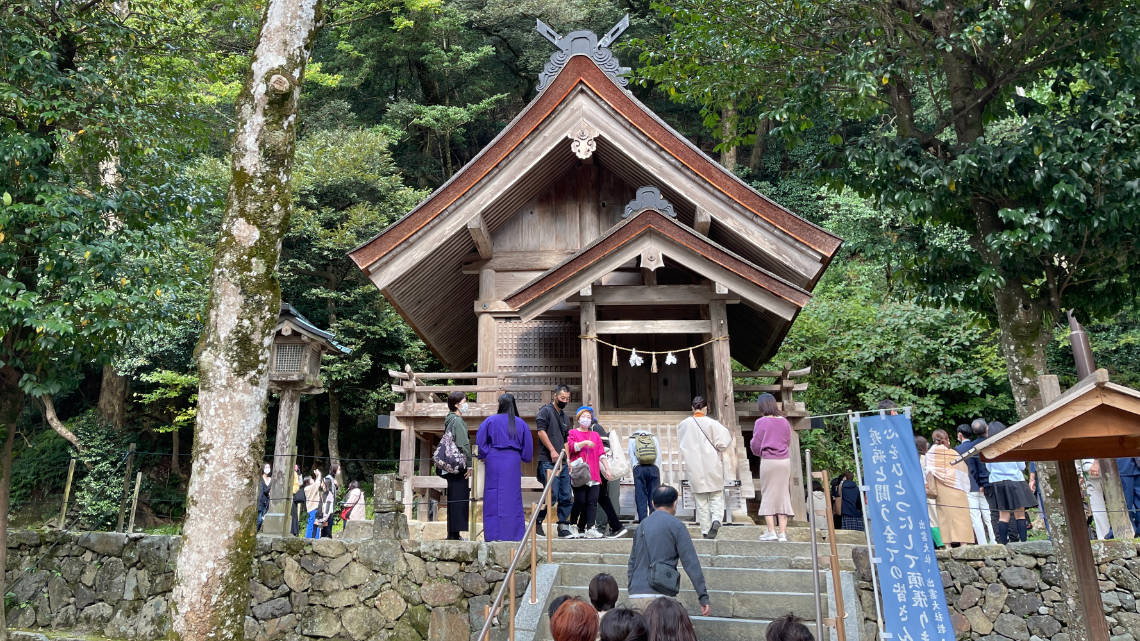
To the west of the main shrine, the Kagura-den features Japan’s largest shimenawa. Coming from the main shrine area, the pathway is flat with a small ramp. The Kagura-den has a ramp for access.
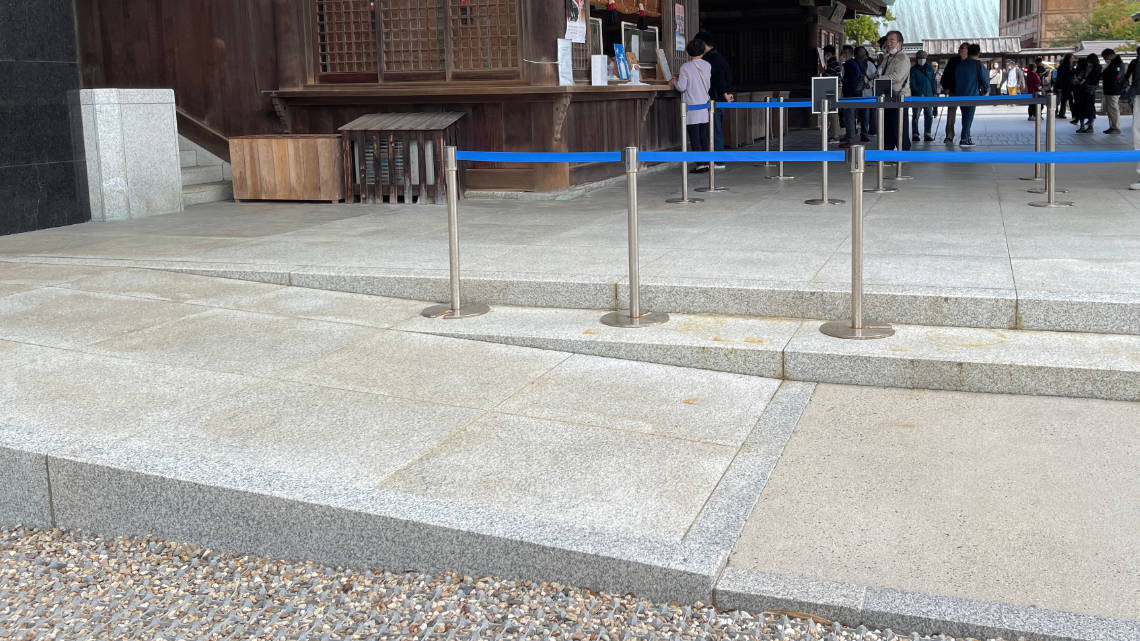
Several wheelchair accessible toilets are available on the grounds and are clearly indicated on maps through out the area.
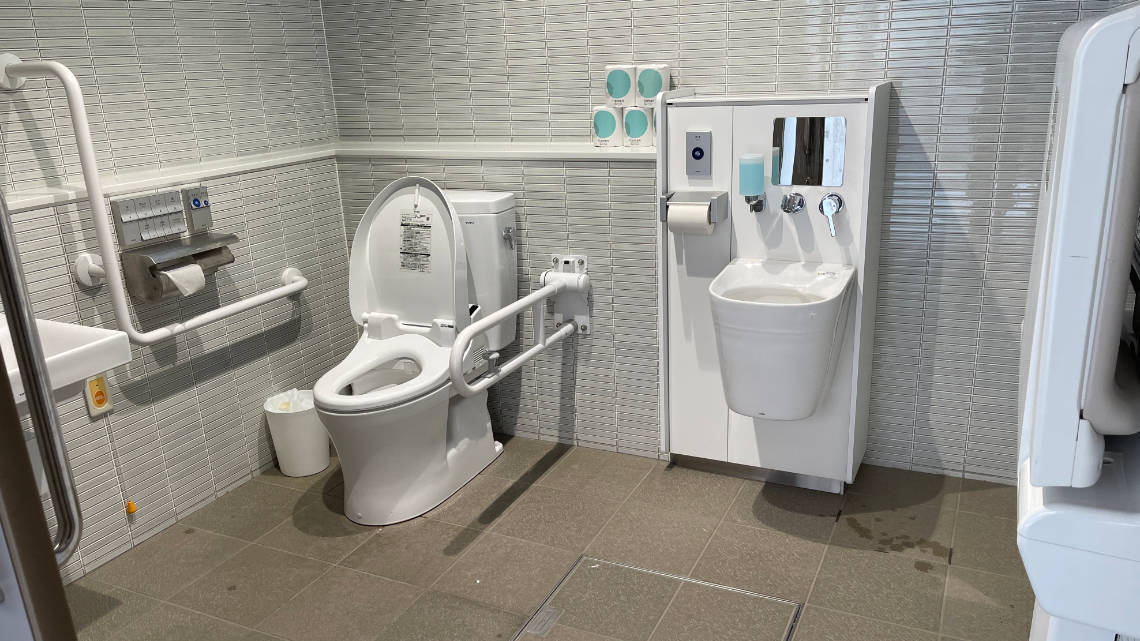
There are few places to rest but wheelchairs can be borrowed at the main office between 8:30-16:30.
Service dogs (seeing-eye dogs, assistance dogs, and hearing dogs) are allowed is some parts, however, in many of the buildings and worship hall they may not be allowed. There are no tactile blocks.
Conclusion
Izumo Taisha is a must-see for anyone who is looking for the part of Japan that is deeply tied to its history. In fact, you can’t find to many other spots with a cultural background as significant as Izumo Taisha anywhere else in Japan. A perfect opportunity for taking many photos and learning more about what made Japan.








